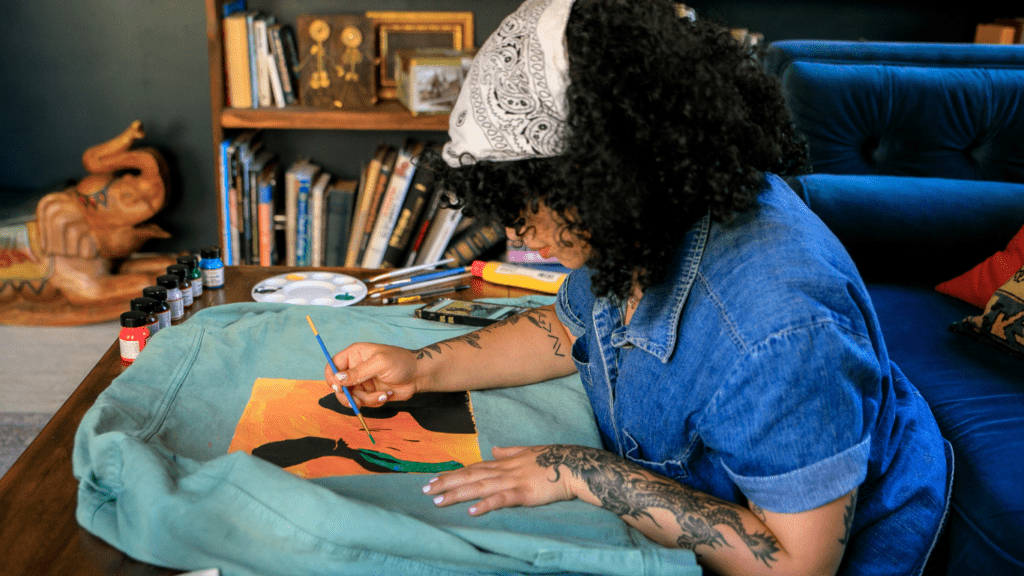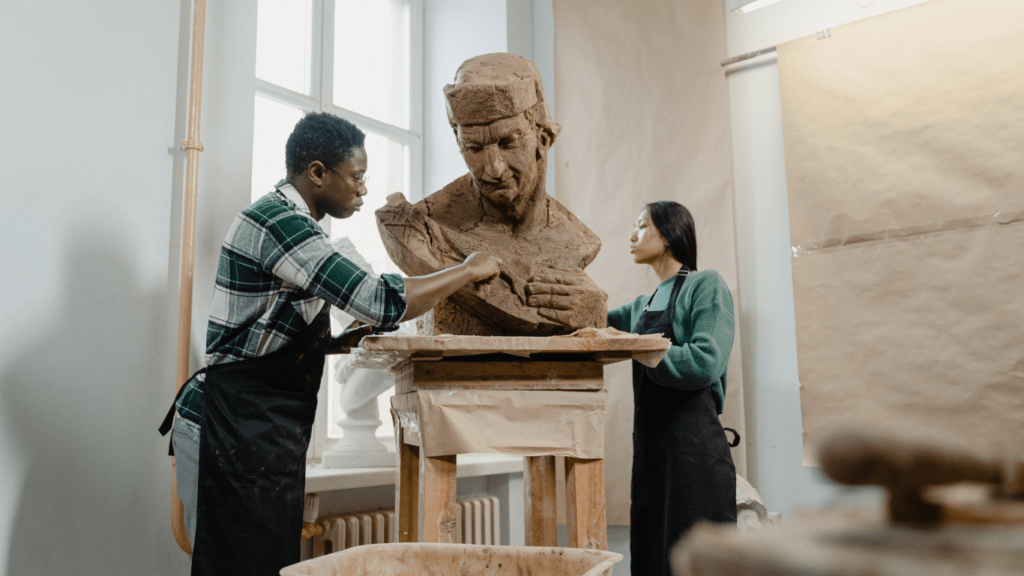Crafting a captivating artist statement is more than just words on paper—it’s the bridge that connects your artwork with your audience, offering insight into your creative process and inspiration. As an artist, I understand the challenge of translating visual expression into a concise and engaging narrative. In this article, I’ll share valuable tips and strategies to help you master the art of creating compelling artist statements that resonate with viewers and art enthusiasts alike.
Your artist statement is your voice in the art world, conveying the essence of your work and inviting others to delve deeper into your artistic vision. Through my own experiences and expertise, I’ll guide you through the process of articulating your unique perspective in a way that captivates and intrigues. Let’s unlock the power of words to elevate your artistry and leave a lasting impression on those who encounter your creations.
Understanding the Importance of Artist Statements
Crafting an engaging artist statement is vital as it serves as a bridge between my artwork and those who appreciate it. It can be a challenge to convey the essence of my visual expressions into words that captivate viewers.
- Why Your Artist Statement Matters
My artist statement matters because it shapes how my audience perceives my artwork. It’s my opportunity to give insight into my creative process, inspirations, and the emotions behind my creations. By crafting a compelling statement, I can connect with viewers on a deeper level and provide context that enhances their understanding and appreciation of my art. - The Impact on Audience and Galleries
A well-crafted artist statement can have a significant impact on both my audience and galleries. It helps viewers relate to my artwork on a personal level, fostering a sense of connection and understanding. Galleries look for artist statements that not only elucidate the artwork but also showcase the artist’s unique voice and perspective. This can attract galleries that align with my artistic vision and increase the likelihood of my work being exhibited and appreciated in the art world.
Elements of a Compelling Artist Statement
Crafting a compelling artist statement requires attention to key elements that effectively communicate the artist’s vision and create a connection with the audience.
Personal Narrative
In my artist statement, I share a personal narrative that provides insight into my journey as an artist. This narrative not only helps viewers understand the motivation behind my work but also creates a sense of authenticity and connection. By sharing personal experiences and emotions, I invite the audience to see my art through my eyes, fostering a deeper appreciation for my creative process.
Artistic Vision and Techniques
When describing my artistic vision and techniques, I focus on clarity and specificity. I articulate the themes, concepts, and styles that define my work, giving viewers a glimpse into the underlying philosophy of my art. By explaining the techniques and mediums I use in detail, I offer transparency and demonstrate a mastery of my craft. This clarity enhances the viewer’s understanding and appreciation of my artwork.
Inspiration and Influences
Sharing my sources of inspiration and influences in my artist statement adds depth to the narrative. I highlight the artists, movements, or experiences that have shaped my artistic journey, showcasing the diverse sources that inform my creative practice. By acknowledging my influences, I pay homage to the artistic heritage that inspires me and provide context for the themes explored in my work. This transparency enriches the viewer’s engagement with my art, inviting them to explore the layers of meaning woven into each piece.
Steps to Creating Your Artist Statement

Creating a compelling artist statement is vital to establishing a connection between your artwork and your audience. Follow these steps to craft an engaging narrative that resonates with viewers and conveys the essence of your artistic vision.
Starting with a Draft
When starting to draft your artist statement, it’s essential to begin with a personal narrative. Share your journey as an artist, highlighting key experiences that have shaped your creative outlook. This personal touch adds depth to your statement, allowing viewers to connect with you on a more intimate level.
Incorporating Feedback
Seeking feedback on your draft artist statement is crucial to refining your message. Share your statement with fellow artists, mentors, or trusted individuals in the art community. Listen to their perspectives and suggestions, and make adjustments accordingly to ensure your statement effectively communicates your artistic vision.
Finalizing Your Statement
After incorporating feedback, finalize your artist statement by ensuring clarity in describing your artistic vision and techniques. Use clear and concise language to articulate your creative process, influences, and sources of inspiration. Aim to create a statement that not only reflects your passion for art but also captivates viewers and invites them to delve deeper into your work.
Tips for Writing an Engaging Artist Statement
I believe that writing an artist statement that captivates your audience is crucial in sharing the essence of your artistic journey effectively. Here are some essential tips to consider:
Clarity and Conciseness
In crafting your artist statement, it’s vital to communicate your artistic vision with clarity and conciseness. Think of it as a snapshot of who you are as an artist and what drives your creative process. Use clear, straightforward language to describe your work, techniques, and inspiration. Avoid unnecessary jargon or overly complex sentences that may confuse your readers. Remember, brevity can enhance understanding.
Being Authentic and Vulnerable
When writing your artist statement, embrace authenticity and vulnerability. Share your personal narrative and the emotions behind your creations openly. Your audience connects more deeply with art that comes from a place of honesty and vulnerability. Don’t be afraid to reveal your influences, challenges, and aspirations. Being authentic in your statement allows viewers to see the genuine essence of your work and fosters a stronger emotional connection with your art.
Examples of Effective Artist Statements
Crafting a captivating artist statement is crucial in bridging the gap between my artwork and the audience. To help artists navigate this challenge, I’ll analyze successful cases and extract key learnings from them.
Analysis of Successful Cases
Studying successful artist statements offers valuable insights into what resonates with viewers and how to effectively communicate artistic vision. I’ll explore a variety of compelling statements to uncover common elements that engage audiences and establish a strong connection between the artist and their work.
What to Learn from Them
From these exemplary artist statements, I’ll extract essential lessons for crafting my own compelling narrative. By understanding the techniques, styles, and personal touches that captivate viewers, I can enhance my statement to authentically reflect my artistic journey and deepen the emotional impact of my work on the audience.

 Christyn Stearnsio, the visionary founder of Sculpture Creation Tips, is a passionate artist with a deep love for the art of sculpting. With years of experience in the field, Christyn has dedicated her career to sharing her knowledge and expertise with others, creating a platform that serves as a comprehensive guide for sculptors at all levels. Sculpture Creation Tips is a testament to her commitment to nurturing creativity and helping artists master the delicate craft of sculpting. Through detailed tutorials, insightful articles, and a supportive community, Christyn empowers aspiring sculptors to explore their artistic potential, refine their skills, and bring their unique visions to life. Her dedication to the art form is evident in every piece of advice and inspiration she shares, making Sculpture Creation Tips a trusted resource for sculptors around the world.
Christyn Stearnsio, the visionary founder of Sculpture Creation Tips, is a passionate artist with a deep love for the art of sculpting. With years of experience in the field, Christyn has dedicated her career to sharing her knowledge and expertise with others, creating a platform that serves as a comprehensive guide for sculptors at all levels. Sculpture Creation Tips is a testament to her commitment to nurturing creativity and helping artists master the delicate craft of sculpting. Through detailed tutorials, insightful articles, and a supportive community, Christyn empowers aspiring sculptors to explore their artistic potential, refine their skills, and bring their unique visions to life. Her dedication to the art form is evident in every piece of advice and inspiration she shares, making Sculpture Creation Tips a trusted resource for sculptors around the world.
